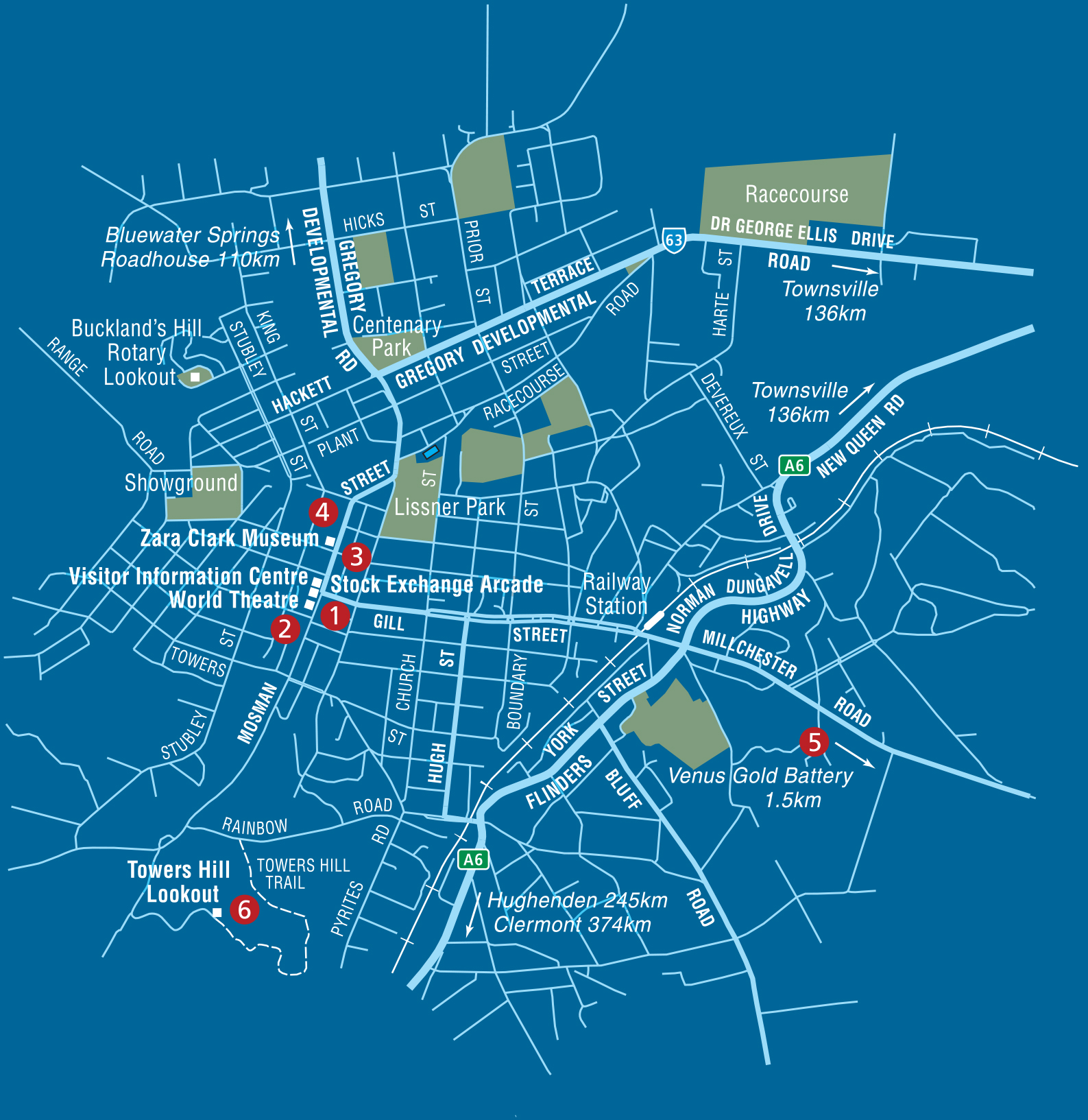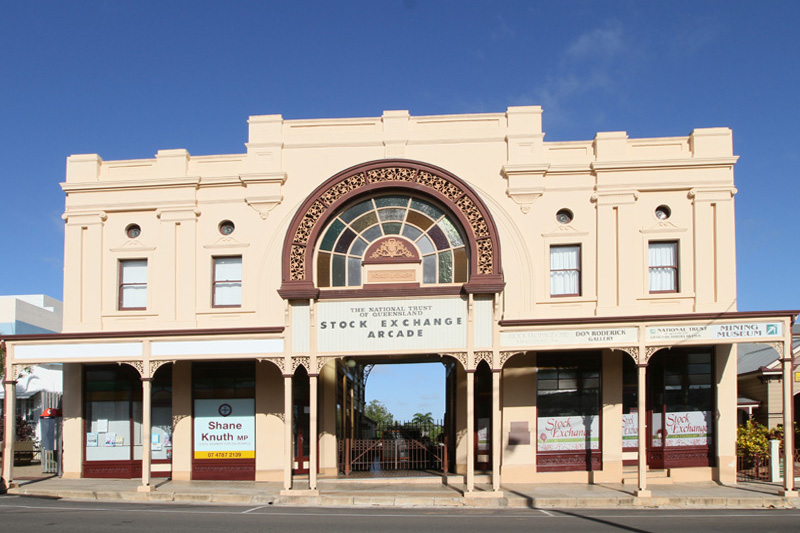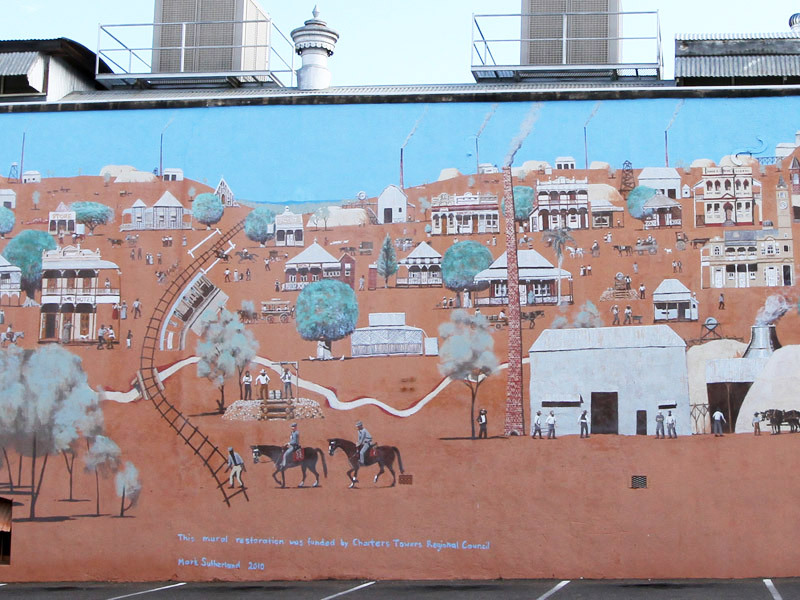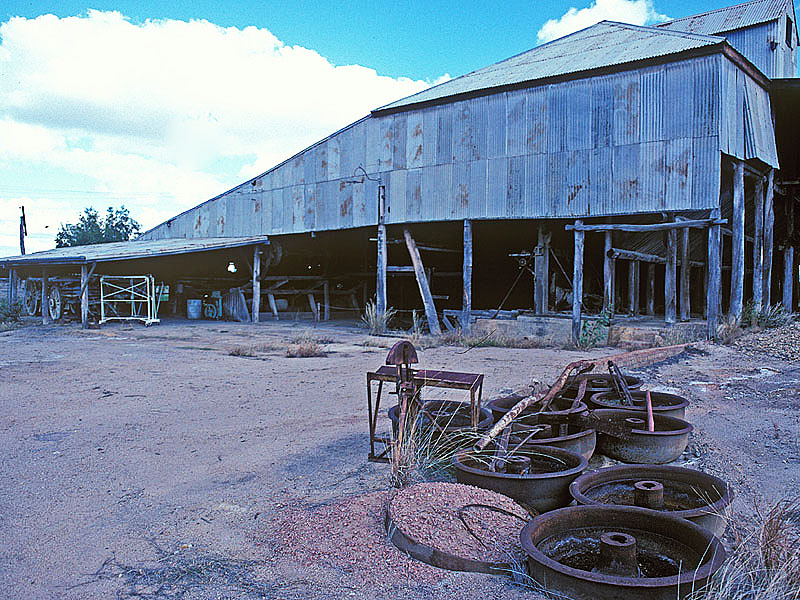A complete guide to Charters Towers, QLD

Charters Towers is arguably Queensland’s most architecturally impressive inland city. Gold was discovered in the district in 1871 and in 1897 the editor of the North Queensland Register,David Green, observed the rapid growth that followed in the newspaper’s Mining History of Charters Towers. “The well-wooded and comparatively flat basin surrounding the small ridges below the Gap, through which the pioneers came, has long since been denuded of its trees,” he documented. “Streets of fine shops and residences have sprung up, cold air stores, telephones, electric light, gaslight, electric fans and other adjuncts of up-to-date civilisation are employed, and 20,000 souls now sleep nightly within a radius of four miles of the spot where the prospectors pitched their first camp a little over 25 years ago. The three workers of that time have increased to 4000 with nearly three quarters of a million pounds worth of machinery to aid in the hunt for gold.”
Charters Towers is now a glorious reminder of the wealth generated by a productive goldfield. With the city fathers – a quixotic band of miners – eager to flaunt their wealth, the buildings in the town centre are solid and impressive. Today, the city is beautifully preserved, the best buildings being concentrated on Mosman and Gill streets. Beyond the town centre there are also excellent gardens and remnants of the goldmining past that invite visitors into a now long-gone world.

Location:
Charters Towers is 136km south-west of Townsville and 1307km north of Brisbane.
Origin of name:
After finding gold near here, Hugh Mosman named three local hills Charters Tors in deference to Ravenswood mining warden
W.S.E.M. Charters. By 1871, the local Ravenswood Miner newspaper was inexplicably calling the settlement Charters Towers.
Useful websites:
Places of Interest
1. Stock Exchange Arcade

During the Charters Towers goldmining boom, the centre of its financial district was the Stock Exchange Arcade at the intersection of Mosman and Gill streets. Built originally in 1887–88 as a shopping precinct known as the Royal Arcade, it became the Charters Towers Stock Exchange from 1890 to 1916. Designed by Sydney architect Mark Cooper Day, it featured a glass roof and large tiled floor space and was illuminated at night by gas lights. The Stock Exchange was established to raise capital for the area’s deep reef mines, with the public allowed to buy and sell stock at 8pm every evening during an event known as the Calling of the Card. The exchange closed in 1916 and is today used by local shops and administered by the National Trust of Queensland.
2. World Theatre
Originally home to The Australian Bank of Commerce Ltd, this building was completed by the Australian Joint Stock Bank in 1891. It was restored in 1996 as the World Theatre and is now used as a civic theatre, cinema and public art gallery offering movies, live concerts and exhibitions. The building combines Classical Revival architecture (with many columns) and Victorian Italianate ornamentation.
3. City Murals

Of the many murals around the town – including those at the Civic Club, Centenary Park, Westpac Bank and
McDonald’s – the most accessible and impressive is in the car park opposite the World Theatre. Created by artist Mark Sutherland in 2010, it shows the town in its heyday, painted in the style of mid-20th century English artist L.S. Lowry, known for his depictions of North West England industrial districts.
4. Zara Clark Museum
Once a general merchant’s shop, this facility owned and run by the National Trust is now a repository for local historic photographs, equipment and memorabilia. Of particular interest is the flying fox once used in the Stan Pollard building in Gill Street to transfer cash from counters to the accounts department.
5. Venus Gold Battery

Proclaimed as “Australia’s oldest remaining gold battery” and recognised as one of the country’s most important historical industrial sites, the Venus Gold Battery, on the corner of Millchester Road and Jardine Street, is 4km from Charters Towers’ centre. It was established in July 1872, became a state battery from 1919 until its 1973 closure, and is Australia’s largest surviving (and Queensland’s oldest surviving) gold battery relic. There are guided daily tours.
6. Towers Hill Lookout
Views across the town and surrounding plain from atop Towers Hill, the area’s highest point, are spectacular. The base of this hill is where gold was first discovered, in late 1871. Today, remaining features include the footings of Clarke’s mine and battery, the ruins of the Pyrites Works, more than 30 ammunition storage dumps from World War II and the remnants of telegraph lines from the 1950s. There are interpretive displays and an amphitheatre where a film, Ghosts After Dark, about the history of Charters Towers, screens at night.

History
The town is on the traditional lands of the Gugu Badhun people.
Explorer Ludwig Leichhardt camps in the area in 1845.
In 1861 Edward Cunningham takes up Burdekin Downs Station.
On 24 December 1871, Hugh Mosman, George Clarke, James Fraser and Jupiter Mosman discover gold.
Venus Mill begins operating in 1872.
Borough of Charters Towers is proclaimed on 21 June 1877.
In 1878 the Day Dawn Gold Mining Company Ltd is floated with shares of 10 shillings each.
By 1881 Charters Towers is Queensland’s second-largest town.
Stock Exchange building is erected 1887–88.
In 1893 Anderson Dawson is elected as the local member and in 1899 he becomes the premier
of Queensland for a week.
Electric light installed in 1897.
By 1900 the town has 92 hotels.
Charters Towers is proclaimed a city in 1909.
During WWII, 15,000 US servicemen are stationed in the city.





